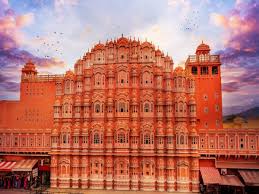The Timeless Beauty of Historic Buildings
Historic buildings stand as silent witnesses to the passage of time, preserving the stories and memories of bygone eras. These architectural marvels not only showcase the craftsmanship and ingenuity of their builders but also provide a tangible link to our collective past.
A Glimpse into History
Walking through the halls of a historic building is like stepping back in time. Each creaky floorboard, ornate molding, and stained glass window tells a story of the people who lived and worked within those walls centuries ago. From grand palaces to humble cottages, historic buildings offer us a glimpse into the daily lives, aspirations, and struggles of those who came before us.
Architectural Splendor
The architectural styles found in historic buildings are as diverse as the cultures and civilizations that created them. From the intricate carvings of Gothic cathedrals to the sleek lines of Art Deco skyscrapers, each building reflects the design trends and aesthetic preferences of its time. Historic buildings serve as living museums of architecture, showcasing the evolution of design principles and construction techniques over the years.
Preserving our Heritage
Preservation efforts play a crucial role in maintaining historic buildings for future generations to enjoy. By restoring and protecting these architectural gems, we not only safeguard our cultural heritage but also create opportunities for education, tourism, and community engagement. Historic buildings serve as focal points for local pride and identity, anchoring communities in their shared history.
A Source of Inspiration
Historic buildings continue to inspire architects, designers, and artists with their timeless beauty and enduring charm. The intricate details, elegant proportions, and rich histories embedded in these structures serve as wellsprings of creativity for modern-day creators seeking to honor tradition while pushing boundaries.
Conclusion
As we marvel at the grandeur of historic buildings scattered across cities and countryside alike, let us remember that these architectural treasures are not just relics of the past—they are living testaments to human ingenuity, resilience, and creativity. By cherishing and preserving historic buildings, we ensure that future generations can continue to be inspired by their timeless beauty for years to come.
Common Questions About Historic Buildings
- Which building has the most history?
- What does it mean to be a historic building?
- What are historical buildings called?
- What is the word for a historical building?
Which building has the most history?
The question of which building has the most history is a complex and subjective one, as the depth of history associated with a building can vary greatly depending on cultural significance, architectural importance, and historical events that took place within its walls. While some buildings may be renowned for their age and the prominent figures who once resided there, others may hold more historical value due to their role in shaping significant moments in time. Ultimately, the answer to this question is multifaceted and open to interpretation, highlighting the rich tapestry of history woven into the fabric of our built environment.
What does it mean to be a historic building?
A historic building is more than just a structure with old walls and a storied past—it is a tangible link to our shared heritage and cultural identity. Being designated as a historic building signifies that the structure holds significant historical, architectural, or cultural value that merits preservation and protection. These buildings often represent important milestones in a community’s history, showcase unique architectural styles or techniques, or serve as landmarks that have shaped the local landscape over time. By recognizing and honoring historic buildings, we not only celebrate the achievements of those who came before us but also ensure that future generations can appreciate and learn from these vital pieces of our collective history.
What are historical buildings called?
Historical buildings are commonly referred to as “historic buildings” or “heritage buildings.” These structures hold significant cultural, architectural, or historical value and are often recognized and protected for their importance in preserving a community’s heritage. Historic buildings can range from grand landmarks to humble dwellings, each telling a unique story of the past and contributing to the collective identity of a place. The designation of a building as historic signifies its importance in maintaining a connection to the past and ensuring that future generations can appreciate and learn from the legacy it embodies.
What is the word for a historical building?
The term commonly used to refer to a historical building is “landmark.” Landmarks are structures, sites, or monuments that hold significant historical, cultural, or architectural value and are often recognized and protected for their importance in preserving a community’s heritage. These iconic landmarks serve as tangible reminders of the past and play a vital role in connecting present-day society with the stories and achievements of earlier generations.





